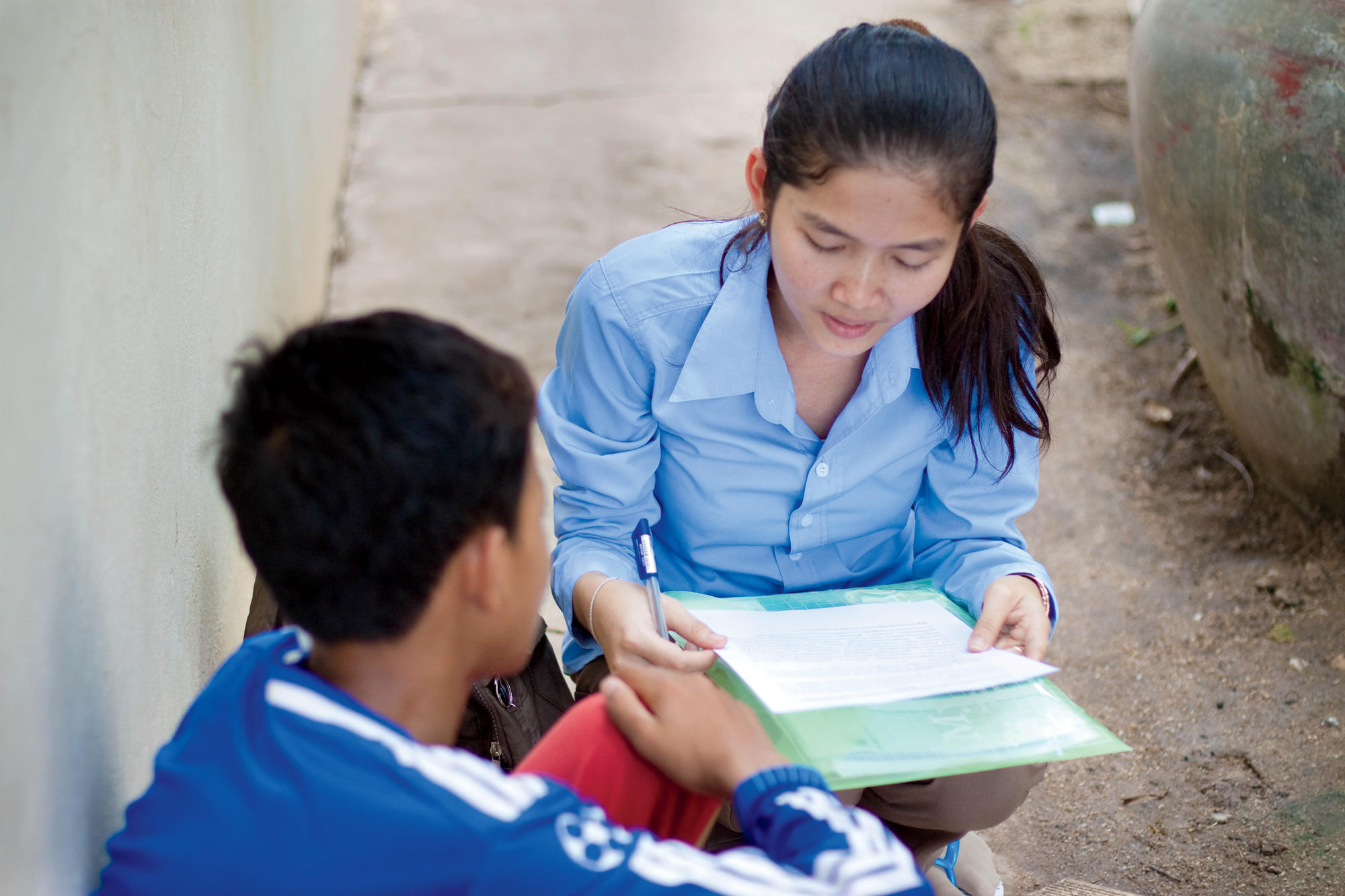The developing world has no shortage of orphanages. Many of the children who live in them, however, have been placed there by parents who cannot afford to feed, clothe, or educate them. Child-welfare experts say that this trend has been exacerbated by some governments and international aid agencies, which have built more orphanages rather than implementing social-welfare programs that could enable poor people to provide for their own children.
One country that has declared its intention to break this cycle, Cambodia, recently invited researchers from Columbia’s Mailman School of Public Health to investigate the scope of the problem within its borders. The researchers, led by Lindsay Stark ’10PH, an associate professor of population and family health, spent several weeks in Cambodia last year overseeing dozens of local social scientists who fanned out across the country to conduct the first-ever comprehensive census of children in its orphanages. They discovered that nearly 1 percent of the nation’s youths, or approximately 49,000 Cambodians aged seventeen or younger, currently live in orphanages — although just one in five of these children appears to be parentless.
“This confirmed a lot of anecdotal evidence that we’ve gathered in the past,” says Stark. “The sheer scope of the problem, though, stunned us.”
The Cambodian ministry of planning, in a report it released with Stark and Mailman doctoral student Beth Rubenstein this spring, announced that it is committed to reducing the numbers of children living in orphanages over the next three years by expanding social-welfare services for its poorest families. The ministry expects that the Columbia research, which was funded by the US Agency for International Development (USAID), will help generate the political will to tackle the problem, while also providing a benchmark to measure future progress.
According to Stark, previous research has shown that desperately poor parents in developing countries are less likely to place their children in orphanages if they have access to emergency benefits such as food assistance or cash stipends. Parents who lack access to such benefits, she says, may be forced to put their children to work at a young age — a predicament that makes placing them in an orphanage, with its promise of regular meals and a full education, a tempting, if painful, option.
However, Stark says that no orphanage can give children the emotional security that a loving family does. And therein, she says, lies the hidden cost of this trend: even teenagers who emerge from orphanages appearing healthy and well-educated are likely to suffer emotional and economic consequences their entire lives.
“Children in orphanages aren’t assigned individual caregivers, and they see a lot of turnover among the staff and volunteers, so they grow up without the secure and stable relationships that most kids enjoy,” says Stark. She points out that adults who did not have secure attachments in childhood tend to have higher rates of mental-health problems such as depression and anxiety.
Over the next few years, Stark and her colleagues will help monitor the effectiveness of new government initiatives in Cambodia that aim to keep families intact. Meanwhile, the Columbia researchers are planning to conduct similar studies in nations throughout Asia and Africa.
“For too long, building orphanages in developing countries has been seen as an alternative to providing citizens an adequate social safety net,” she says. “The first step in reversing this trend is measuring it statistically, so we know the magnitude of the problem in each country.”



